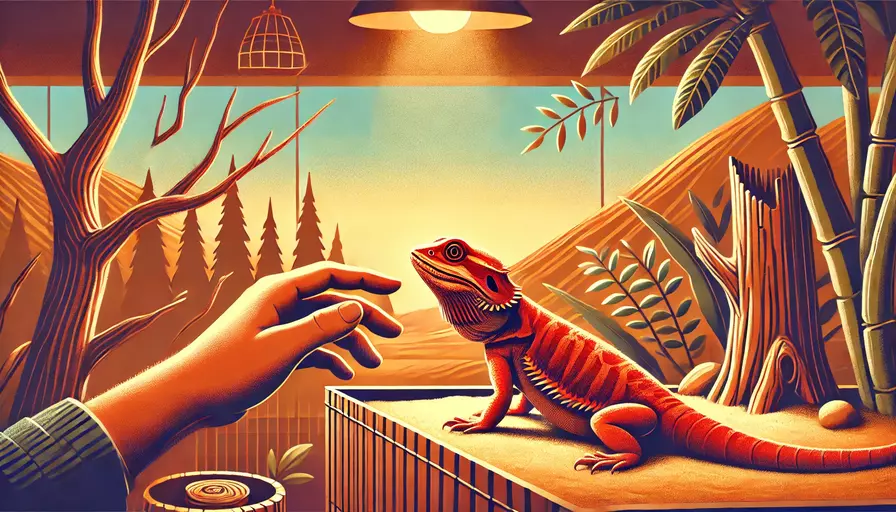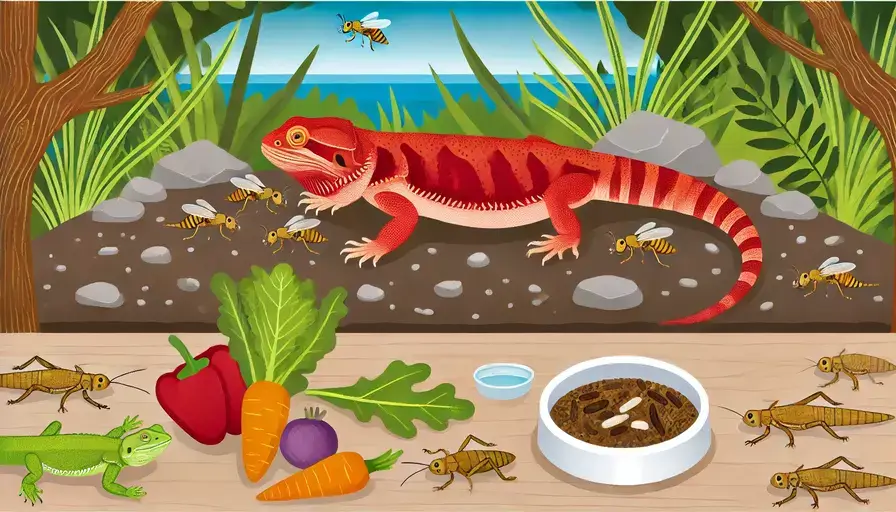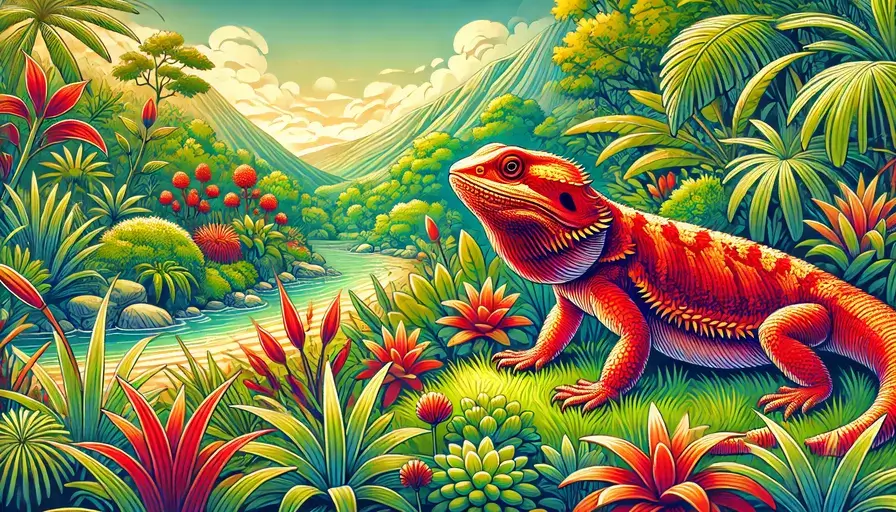Red bearded dragon is a term that evokes images of stunning, vividly colored reptiles that capture the attention of any reptile enthusiast. These striking creatures, with their vibrant hues and unique patterns, are more than just eye candy—they require specific care and attention to thrive in captivity.
This guide will explore the rarity, friendliness, cost, and care considerations of red bearded dragons, providing you with everything you need to know about these fascinating pets.
Is a Red Bearded Dragon Rare?
When it comes to bearded dragons, the red coloration is highly sought after for its visual appeal. However, the rarity of red bearded dragons depends on several factors.
Rarity and Availability: Red bearded dragons are not necessarily rare, but their striking coloration makes them highly desirable. Breeders often produce various color morphs, including red, through selective breeding. While red bearded dragons are not the rarest of the morphs, they can be less common than more standard colors like brown or orange.
Breeding and Genetics: The red coloration in bearded dragons results from specific genetic traits. Breeders who specialize in color morphs, including red bearded dragons, have made these beautiful reptiles more accessible. However, the quality of the red coloration and the overall health of the dragon can vary, so it’s important to choose a reputable breeder.
Are Red Bearded Dragons Friendly?
One of the key considerations for potential pet owners is the temperament of the bearded dragon, including those with vibrant red coloration.
Temperament: Red bearded dragons, like other color morphs, typically exhibit the same friendly and docile nature. Bearded dragons are known for their calm and interactive behavior, making them excellent pets for both beginners and experienced reptile enthusiasts.
Handling and Socialization: Red bearded dragons respond well to gentle handling and socialization. Regular interaction helps them become accustomed to human contact, reducing stress and enhancing their overall temperament. As with any pet, consistent and positive handling is crucial for developing a strong bond with your bearded dragon.

How Much is a Red Bearded Dragon?
The cost of a red bearded dragon can vary based on several factors, including its size, quality of coloration, and the reputation of the breeder.
Price Range: On average, a red bearded dragon can cost between $100 and $300. The price can fluctuate depending on factors such as the specific shade of red, the dragon’s lineage, and the breeder’s reputation. High-quality morphs with intense coloration and desirable traits may be priced higher.
Additional Costs: Beyond the initial purchase price, bearded dragon ownership involves additional costs, such as habitat setup, food, and veterinary care. It’s important to budget for these ongoing expenses to ensure a healthy and comfortable environment for your pet.
How Expensive is a Red Bearded Dragon?
Understanding the overall expense of owning a red bearded dragon involves more than just the initial purchase price.
Initial Costs: The initial cost of purchasing a red bearded dragon is just one part of the overall expense. The cost of setting up an appropriate habitat, including a suitable enclosure, heating, lighting, and substrate, can range from $200 to $500 or more, depending on the size and quality of the setup.
Ongoing Costs: Regular expenses include food, supplements, and veterinary care. A balanced diet, which may include live insects and fresh vegetables, as well as periodic health check-ups, adds to the cost of ownership. Budgeting for these ongoing costs is essential for providing proper care and ensuring the long-term health of your bearded dragon.
Caring for Your Bearded Dragon
Proper care is crucial for maintaining the health and well-being of your red bearded dragon. Here are some essential care tips to consider:
Habitat Setup
Enclosure Size: A red bearded dragon requires a spacious enclosure to accommodate its size and provide room for exercise. A minimum of a 75-gallon tank is recommended for adults, with larger setups providing more space for enrichment.
Temperature and Lighting: Maintain a temperature gradient with a basking area of 95-105°F (35-40°C) and a cooler zone of 75-85°F (24-29°C). Provide UVB lighting to support calcium metabolism and overall health. Regularly check and replace UVB bulbs to ensure they are effective.
Substrate and Enrichment: Choose a safe substrate, such as reptile carpet or tile, to prevent ingestion issues. Add enrichment items like climbing branches, rocks, and hiding spots to mimic their natural environment and promote mental stimulation.
Diet and Nutrition
Balanced Diet: A red bearded dragon’s diet should include a variety of live insects, fresh vegetables, and occasional fruits. Ensure insects are gut-loaded and dusted with calcium and vitamin supplements. Offer a mix of leafy greens and vegetables to meet their nutritional needs.
Hydration: Provide fresh water daily and offer a shallow dish for soaking. Proper hydration is crucial for digestion and overall health.

Health Monitoring
Regular Check-Ups: Schedule regular veterinary check-ups to monitor your bearded dragon’s health and address any concerns related to diet, pooping, or general well-being.
Observing Changes: Keep an eye on any changes in your red bearded dragon’s behavior, appearance, or pooping patterns. Early detection of issues can help prevent more serious health problems.
Additional Resources
For more information on bearded dragon care and related topics, explore these articles:
- Bearded Dragon Habitat Setup: Essential Tips for Comfort and Health
- Bearded Dragon Diet: What to Feed Your Pet for Optimal Health
Conclusion
A red bearded dragon is not only a visually stunning pet but also a friendly and manageable reptile that can make a wonderful addition to your home. Understanding the rarity, temperament, cost, and care considerations of red bearded dragons will help you provide the best environment and care for your vibrant pet. With proper care, your red bearded dragon will thrive and bring joy for many years to come.

